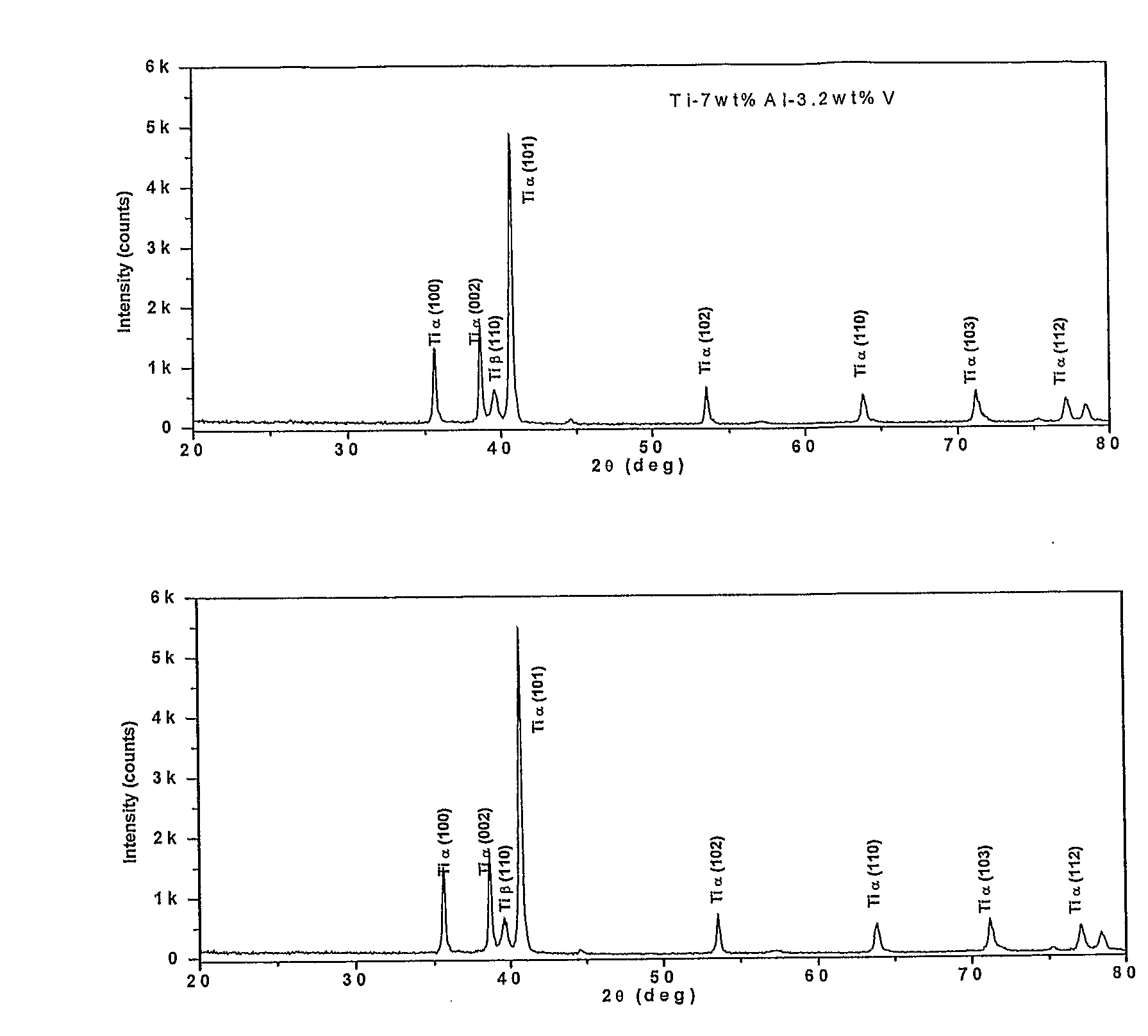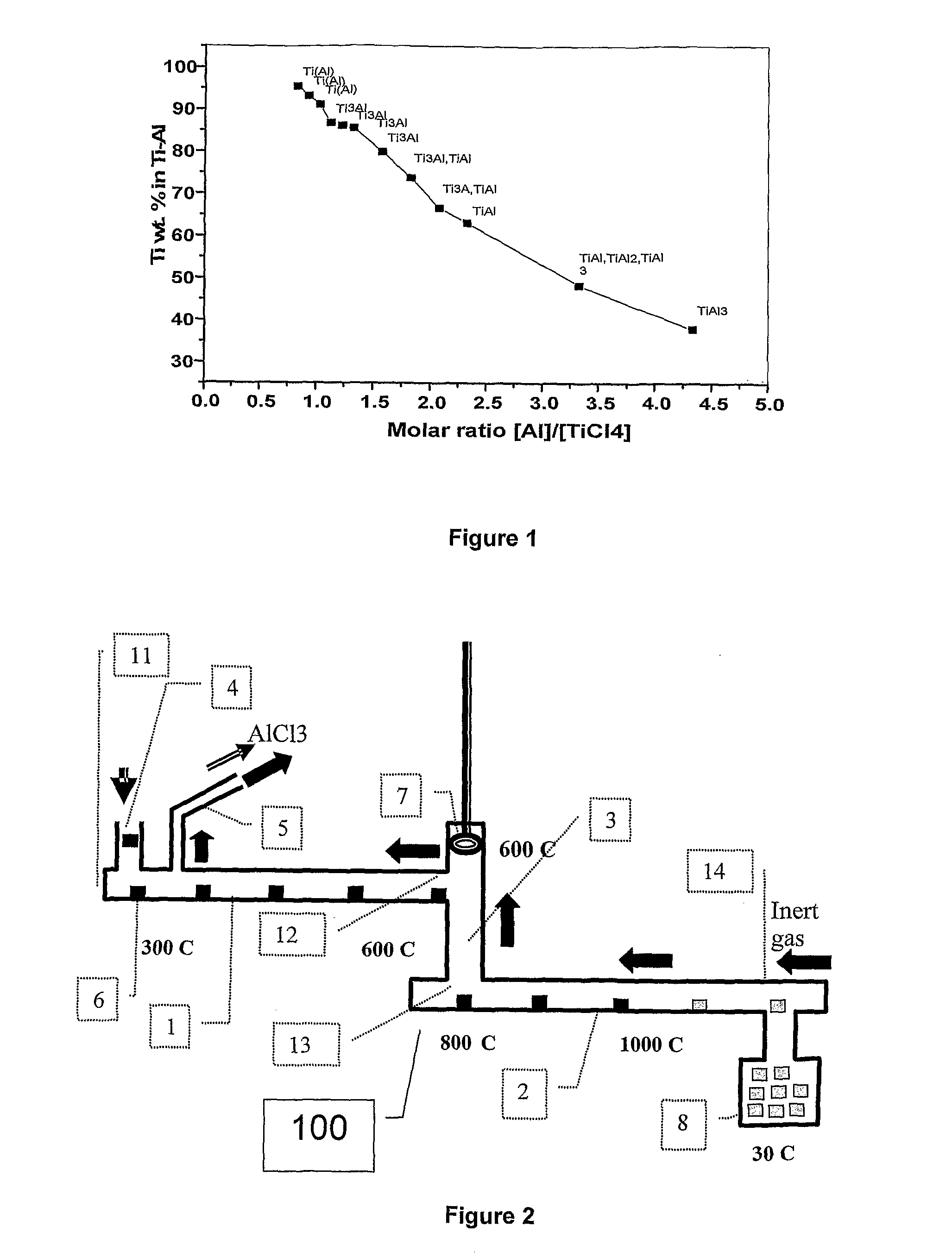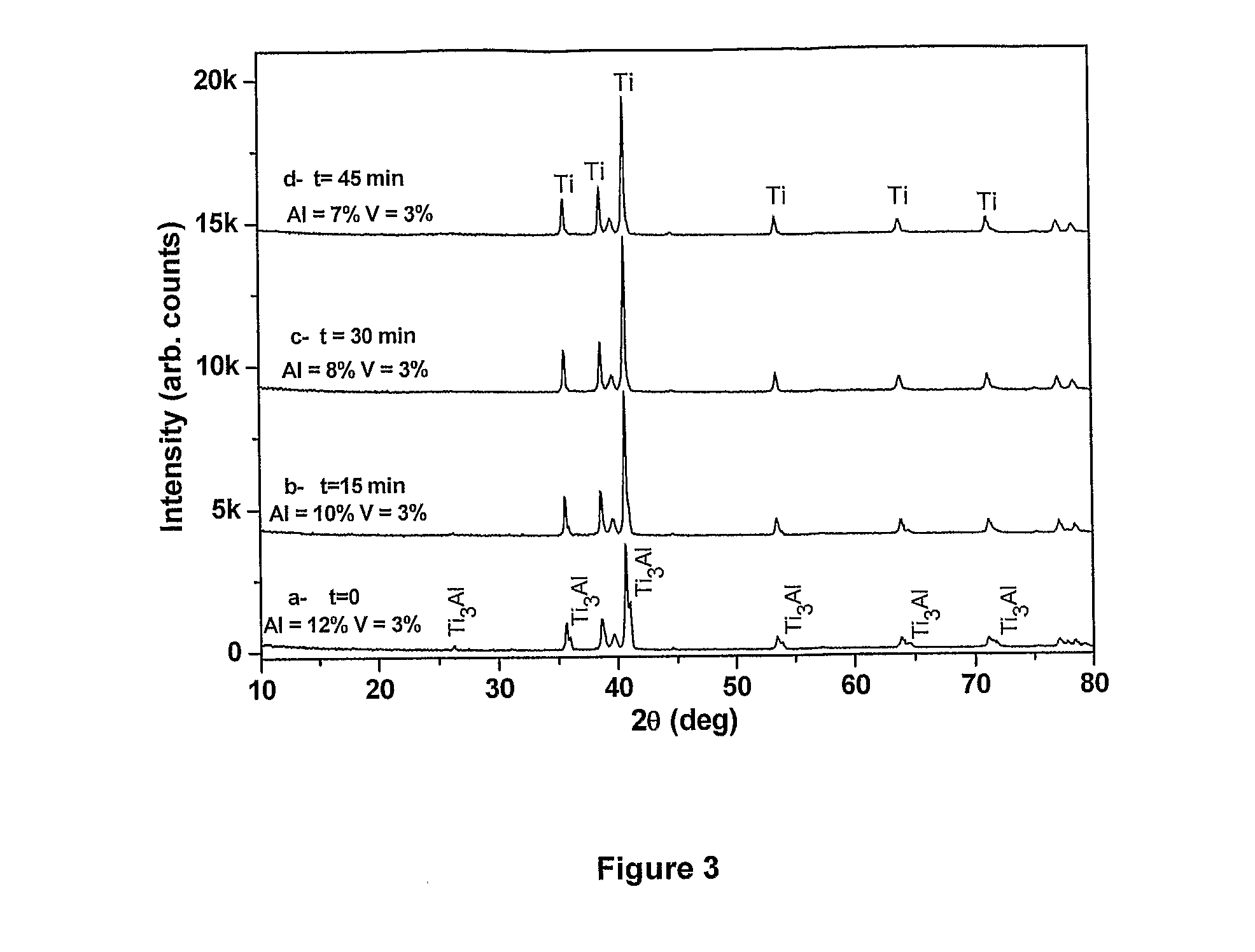Method and apparatus for forming titanium-aluminium based alloys
a technology of titanium-aluminium alloys and alloys, which is applied in the direction of lighting and heating apparatus, blast furnace details, blast furnaces, etc., can solve the problems of affecting the production of titanium-aluminium compounds etc., hindering or preventing further movement, and further exacerbated problems, so as to achieve the effect of reducing accretion
- Summary
- Abstract
- Description
- Claims
- Application Information
AI Technical Summary
Benefits of technology
Problems solved by technology
Method used
Image
Examples
Embodiment Construction
[0062]As described above, titanium-aluminium based alloys may be produced via a two stage reduction process, based on reduction of titanium tetrachloride with aluminium. In a primary reaction stage (e.g. stage 1 disclosed in WO 2007 / 109847), TiCl4 is reduced with Al (optionally in the presence of AlCl3) to produce titanium subchlorides according to the following reaction:
TiCl4+(1.333+x)Al→TiCl3+(1+x)Al+0.333AlCl3 or (1)
TiCl4+(1.333+x)Al→TiCl2+(0.666+x)Al+0.666AlCl3 (1)
[0063]This reaction may be carried out at temperatures below 200° C. at 1 atm. The reaction is preferably carried out at temperatures below 150° C., and more preferably at temperatures below the boiling point of TiCl4 (136° C.).
[0064]In stage 2, precursor material in the form of the products of reaction (1), with the addition of additional aluminium (e.g. aluminium powder or aluminium flakes) if required, are processed at temperatures between 200° C. and 1300° C. (preferably between 200° C. and 1000° C.), leading dir...
PUM
| Property | Measurement | Unit |
|---|---|---|
| Temperature | aaaaa | aaaaa |
| Temperature | aaaaa | aaaaa |
| Temperature | aaaaa | aaaaa |
Abstract
Description
Claims
Application Information
 Login to view more
Login to view more - R&D Engineer
- R&D Manager
- IP Professional
- Industry Leading Data Capabilities
- Powerful AI technology
- Patent DNA Extraction
Browse by: Latest US Patents, China's latest patents, Technical Efficacy Thesaurus, Application Domain, Technology Topic.
© 2024 PatSnap. All rights reserved.Legal|Privacy policy|Modern Slavery Act Transparency Statement|Sitemap



